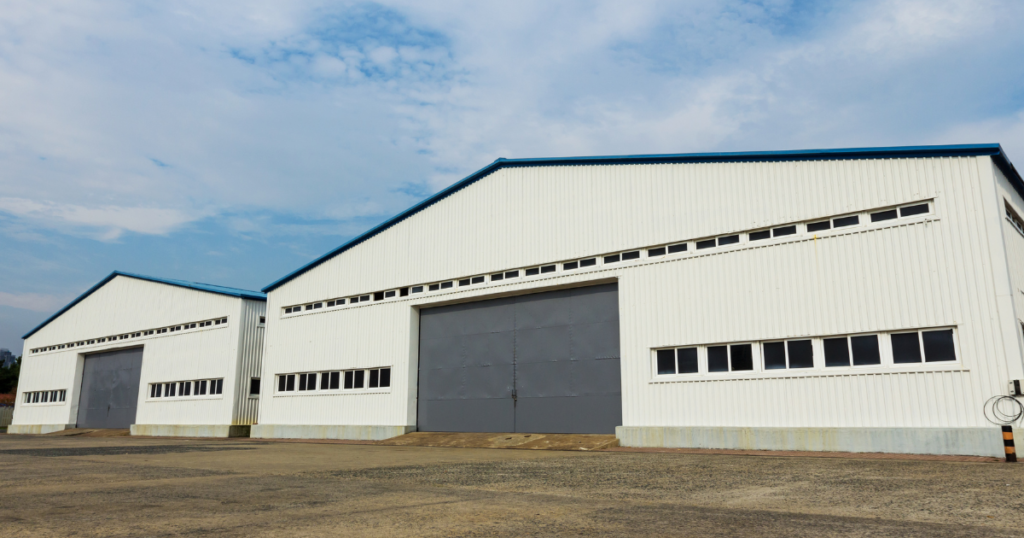As we roll into 2025, there’s a quiet but powerful shift happening in Southern California’s industrial real estate scene. At first glance, you might not notice it — maybe a new warehouse going up, or a For Lease sign coming down. But take a closer look, and the signs of a rebound are hard to miss.
Vacancy rates are dropping, e-commerce is booming again, and companies are rethinking where and how they build and ship their products. Whether you’re an investor, a business owner, or just curious about how these trends affect your neighborhood, this resurgence could impact everything from local job markets to national supply chains. Let’s break it all down, Sarah-style.
What’s Fueling the Industrial Market’s Recovery?
Let’s start with the numbers — because they’re telling a pretty encouraging story.
In the Inland Empire, vacancy rates are holding steady around 8.0% as we kick off the year. That might not sound exciting at first, but after several quarters of uncertainty, it’s a solid sign of stabilization.
E-commerce is also playing a big role. With online sales expected to reach $1.22 trillion by the end of 2024, demand for logistics and warehouse space is rising again. Add in a slowdown in new construction (thanks to recent legislation), and existing properties are suddenly looking a lot more valuable.
And investors are paying attention. Los Angeles alone saw over $2.3 billion in industrial transactions recently, a strong vote of confidence from the institutional crowd.
Why Location Still Reigns Supreme
Southern California’s secret weapon? Geography.
Being close to the massive ports in Los Angeles and Long Beach gives the region a huge advantage when it comes to shipping, manufacturing, and distribution. If you’re a business trying to cut transportation costs or speed up delivery times, setting up shop near the ports just makes sense.
Here’s why location is making such a difference:
Lower Costs: The closer you are to the ports, the less you spend moving goods.
High Volume: These ports handle a major share of U.S. imports, which supports strong industrial demand.
Easy Access: Southern California is a springboard for reaching both West Coast and national markets.
It’s this combo of efficiency, reach, and infrastructure that keeps SoCal on every logistics map.
The Reshoring Trend Is Real — and It’s Growing
Remember when supply chains got all tangled during the pandemic? A lot of companies do — and they’re bringing their manufacturing closer to home because of it.
That’s where reshoring comes in. Companies are moving operations back to the U.S. to reduce risk and shorten delivery times. For Southern California, that means more demand for local industrial properties, especially ones that can support light manufacturing and modern logistics.
Here’s what that trend looks like in action:
More demand for properties near end users (aka customers).
Opportunities for investors who own or develop flexible, well-located spaces.
Growth in secondary markets that were previously overlooked.
It’s not just about big factories anymore — it’s about smart, strategic spaces that work for how business gets done today.
Class A Properties Are Stealing the Spotlight
If you’re hearing buzz about “Class A industrial,” there’s a good reason.
These are the newer, shinier properties — think high ceilings, energy efficiency, smart loading docks, and close proximity to major freeways or ports. As businesses evolve, these features are becoming must-haves, not nice-to-haves.
And in SoCal, that demand is pushing rents higher for these properties. They’re in short supply, but high demand — which is always good news for investors and landlords.
Landlords Are Getting Creative
To stay competitive in this evolving market, landlords aren’t just relying on prime locations and polished spaces — they’re also rethinking the way they structure deals.
You’ll see more:
Free rent offers and tenant improvement allowances
Flexible lease terms that can shift with a tenant’s needs
Sale-leasebacks and joint ventures to help close the deal
It’s all part of a bigger trend: adapting to meet the moment, especially as vacancy rates adjust and interest rates ease up.
The Big Picture: What’s Driving the Shift in 2025?
It’s not just about real estate — the economy is playing a big role too.
Here’s what’s happening behind the scenes:
Economic Recovery: As the broader economy stabilizes, businesses are growing again — and looking for space to expand.
Interest Rate Cuts: With the Fed lowering rates in late 2024, borrowing has become more affordable, bringing new buyers into the market.
E-Commerce Momentum: Online shopping continues to grow, driving demand for fulfillment centers, last-mile logistics, and distribution hubs.
Put it all together, and it’s easy to see why 2025 feels like a turning point for SoCal’s industrial sector.
What This Means for Investors and Tenants
If you’re an investor: Keep an eye on existing Class A properties, especially those near the ports or in up-and-coming markets. Rising demand, limited supply, and new legislative hurdles to construction could mean strong long-term value.
If you’re a business or tenant: The time to lock in favorable lease terms might be now, while landlords are still offering incentives and vacancy rates are adjusting.
And if you’re both? You’ve got a window of opportunity to play smart and move quickly.
Final Thoughts
Industrial real estate might not have the flash of luxury condos or trendy retail, but in Southern California — where goods move, markets shift, and innovation never slows — it’s proving to be one of the most resilient and promising sectors around.
Whether you’re looking to invest, lease, or simply stay ahead of the economic curve, 2025 is shaping up to be a year full of opportunity in the industrial space. And like I always say — the more informed you are, the better positioned you’ll be to take advantage of it.
Curious about what markets are heating up near you? Or want help understanding how these trends affect your business? Let’s chat — I love diving into these kinds of conversations.



